Affiliate links on Android Authority may earn us a commission. Learn more.
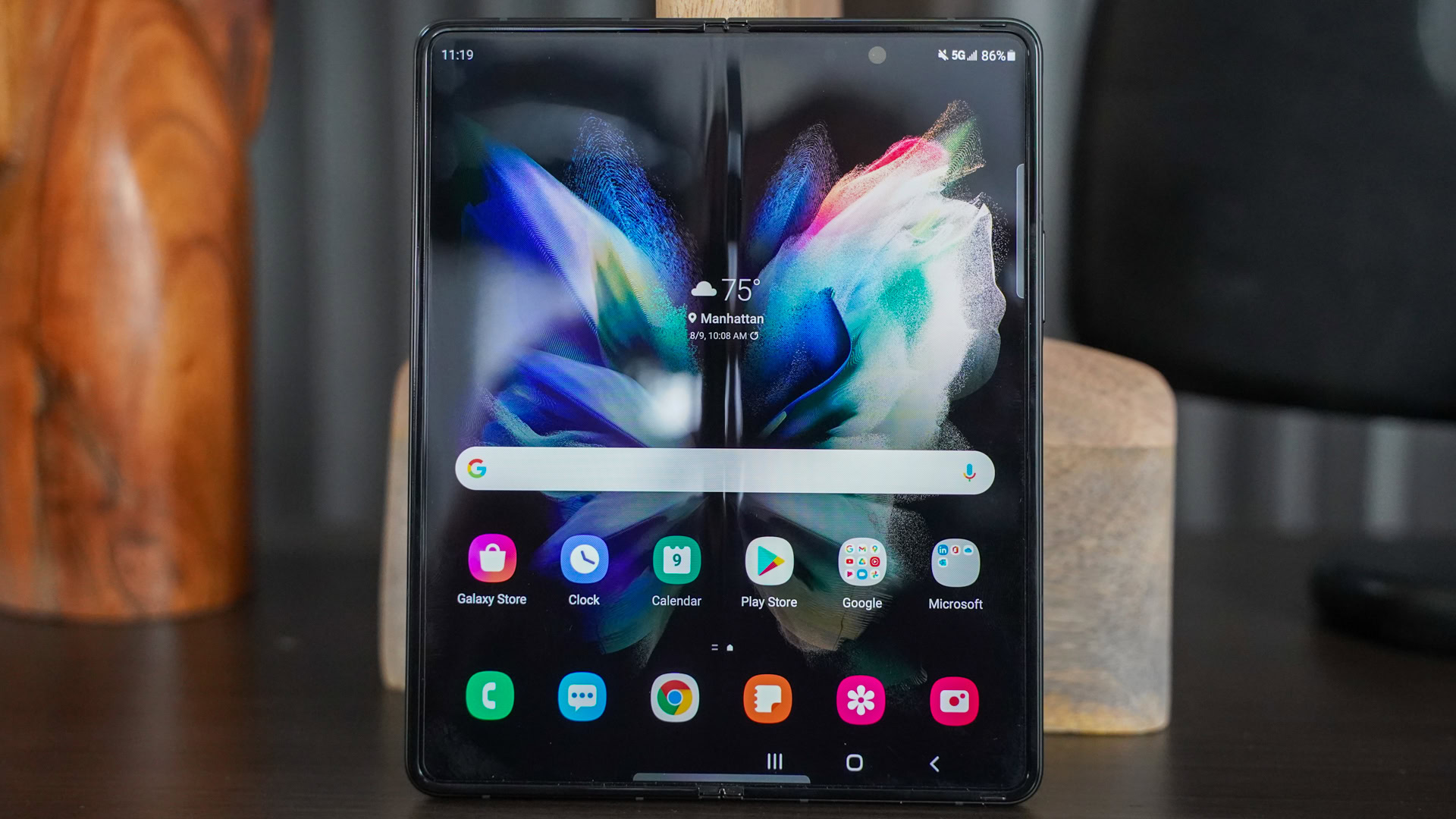


Samsung Galaxy Z Fold 3
MSRP:
What we like
What we don't like
Our scores

Samsung Galaxy Z Fold 3
Samsung defined the market for foldable phones with the original Galaxy Fold in 2019. It offered people the utility of a tablet in a device that fit into their pocket thanks to the technically advanced bending screen. The first Fold was fragile, however, and unaffordable for most. Samsung addressed the fragility with the Z Fold 2, but not the cost. The Galaxy Z Fold 3 sees Samsung making strides in both areas thanks to an even more robust folding screen and a lower price of entry.
These updates help the Galaxy Z Fold 3 remain the standard for what a folding phone should be, leaving many rivals far behind. HUAWEI, OPPO, HONOR, and Microsoft have all taken their own approaches to foldable tech, but none carry the expectations of the Z Fold 3, and very few are available on a global scale. That means Samsung still more or less has the market on lock. Will any phone maker ever step up or catch up?
Find out what sets the Fold apart in the Android Authority Samsung Galaxy Z Fold 3 review.
Update, August 2022: We’ve updated this review by adding in an FAQ section that answers the most asked questions about the device. We’ve also listed a few new competitors that are available on the market and more.
What you need to know about the Samsung Galaxy Z Fold 3
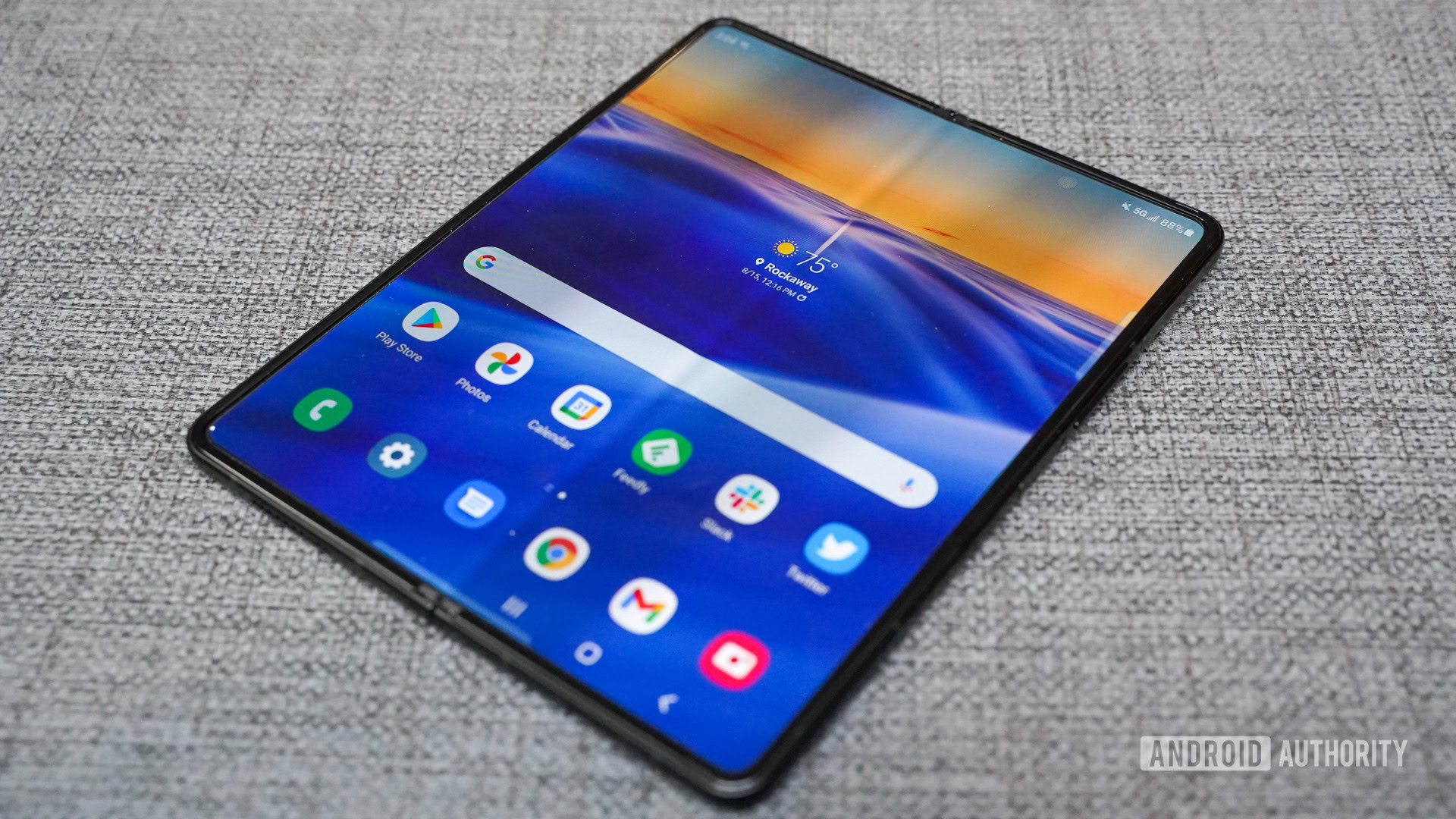
- Samsung Galaxy Z Fold 3 (256GB): $1,799 / €1,799 / £1,599
- Samsung Galaxy Z Fold 3 (512GB): $1,899 / €1,899 / £1,699
This is Samsung’s third-generation Galaxy Z Fold, a device that opens like a book to reveal a large internal screen. The device boasts two displays, and apps that can seamlessly transition from one to the other to help you maximize your productivity and fun. The 2021 iteration of the Galaxy Z Fold sees tasteful but important updates to the hardware that made it a stronger, more useful device that’s easier than ever to recommend. It also adds compatibility with Samsung’s S Pen stylus, though it lacks an internal space to garage the S Pen like you get with the Galaxy S22 Ultra.
What’s the difference? Samsung Galaxy Z Fold 3 vs Galaxy Z Fold 2
If Samsung has tempted you with its Galaxy Z Fold 3 smartphone, we recommend you buy directly from Samsung rather than general retail. The company is offering generous trade-in values, even months after launch, on your old phones in addition to multiple financing options.
You’re going to need those discounts. At $1,799 for the 256GB model and $1,899 for the 512GB model, the Samsung Galaxy Z Fold 3 might cost 10% less than the old models did, but that doesn’t mean it’s affordable yet. The Z Fold 3 remains one of the most expensive smartphones in the market and that relegates it to the absolute top of the premium tier. No other device has quite the cachet as a folding phone and you’ll pay for the experience.
The Galaxy Z Fold 3 remains one of the most expensive smartphones in the market.
Samsung is shipping the phone with the absolute minimum in the way of in-box goodies. There’s no charger, no headphones, and no case, just a USB-C cable, and a SIM ejector tool. It comes in Phantom Black, Phantom Silver, and Phantom Green. The S Pen is sold separately. There are two options, the S Pen Fold ($49), which is only compatible with the Z Fold 3, or the S Pen Pro ($99), which is much bigger and adds Bluetooth and compatibility with many older Samsung phones and tablets. Pick your S Pen poison wisely.
Design: A step up

- Armor Aluminum, Gorilla Glass Victus
- 158.2 x 67.1 x 16mm (folded), 158.2 x 128.1 x 6.4mm (unfolded)
- 271g
- Side-mounted fingerprint reader
- IPX8
- Phantom Black, Phantom Silver, Phantom Green
Samsung nipped and tucked the design here and there in just the right ways to boost the Z Fold 3’s appeal when compared to its predecessors.
Samsung upgraded the chassis to what it calls Armor Aluminum, something that’s purported to be stronger than 7,000 series aluminum. As before, each half of the phone has a full metal frame that attaches to the hinge mechanism in the middle. The two outer glass panels have been upgraded to Corning Gorilla Glass Victus, the company’s most shatter-proof material yet. The glass is curved along the edges where it tucks into the metal frame. This helps smooth out the profile of the phone to a small degree. The four corners of the phone have been rounded off just a hair, too.
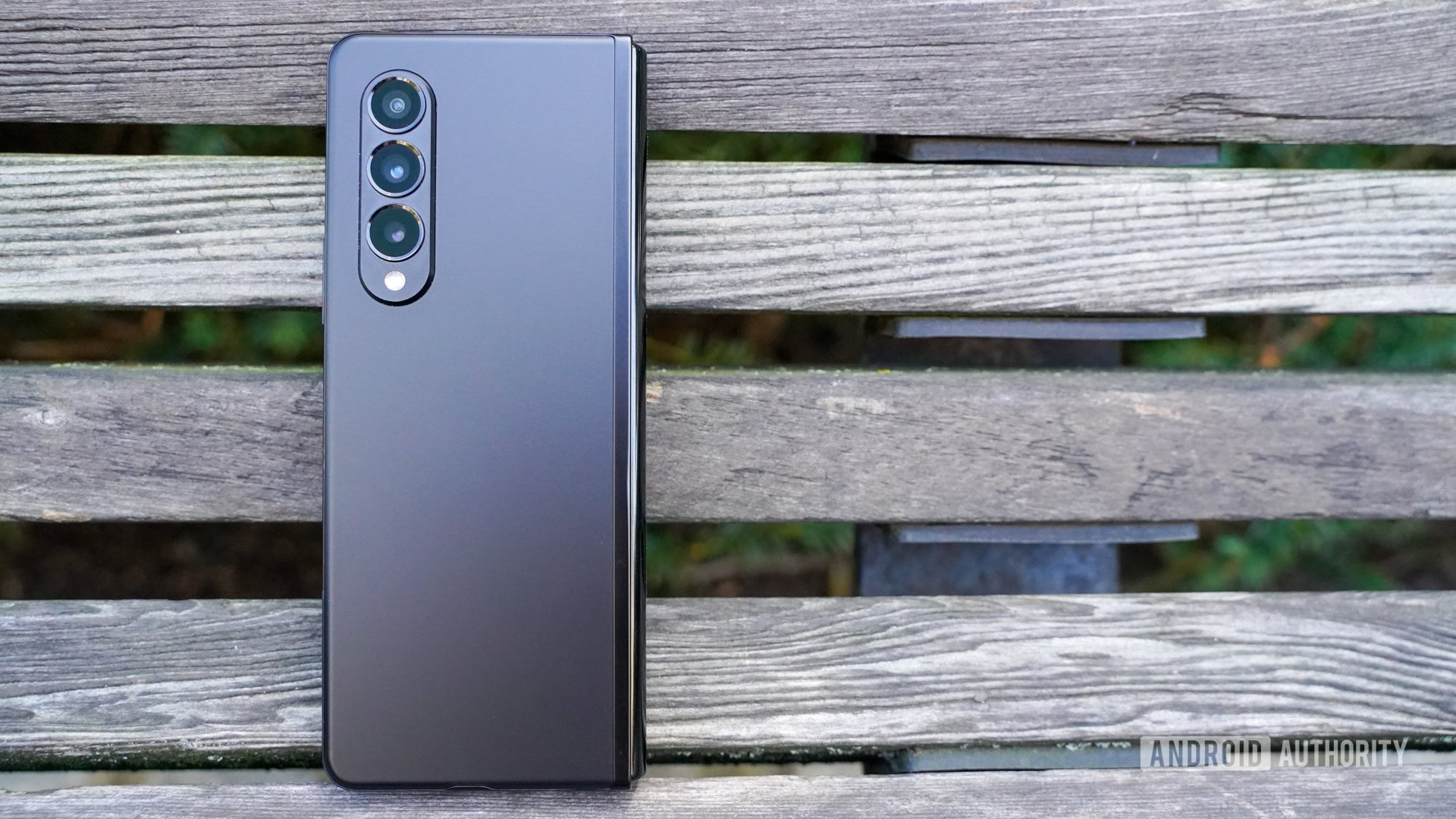
These changes make for a more robust piece of hardware that’s also more comfortable in the hand. The phone simply feels stronger. It doesn’t hurt that the device is also fractionally thinner and lighter. The squarish shape is still awkward to use when open because it’s hard to grip one-handed, but that’s something owners will get used to over time.
The flexible screen is some of the most advanced tech available to consumers.
The hinge continues to be a wonder. It is covered by a thick aluminum spine that runs the entire height of the phone. All the mechanics are hidden within, leaving the end-user with a seamless experience when opening and closing the device. The action of the hinge is smooth and fluid, and it holds the Z Fold 3 at any angle so you can set the phone in multiple positions. It’s really cool how the spine disappears as you open the phone.
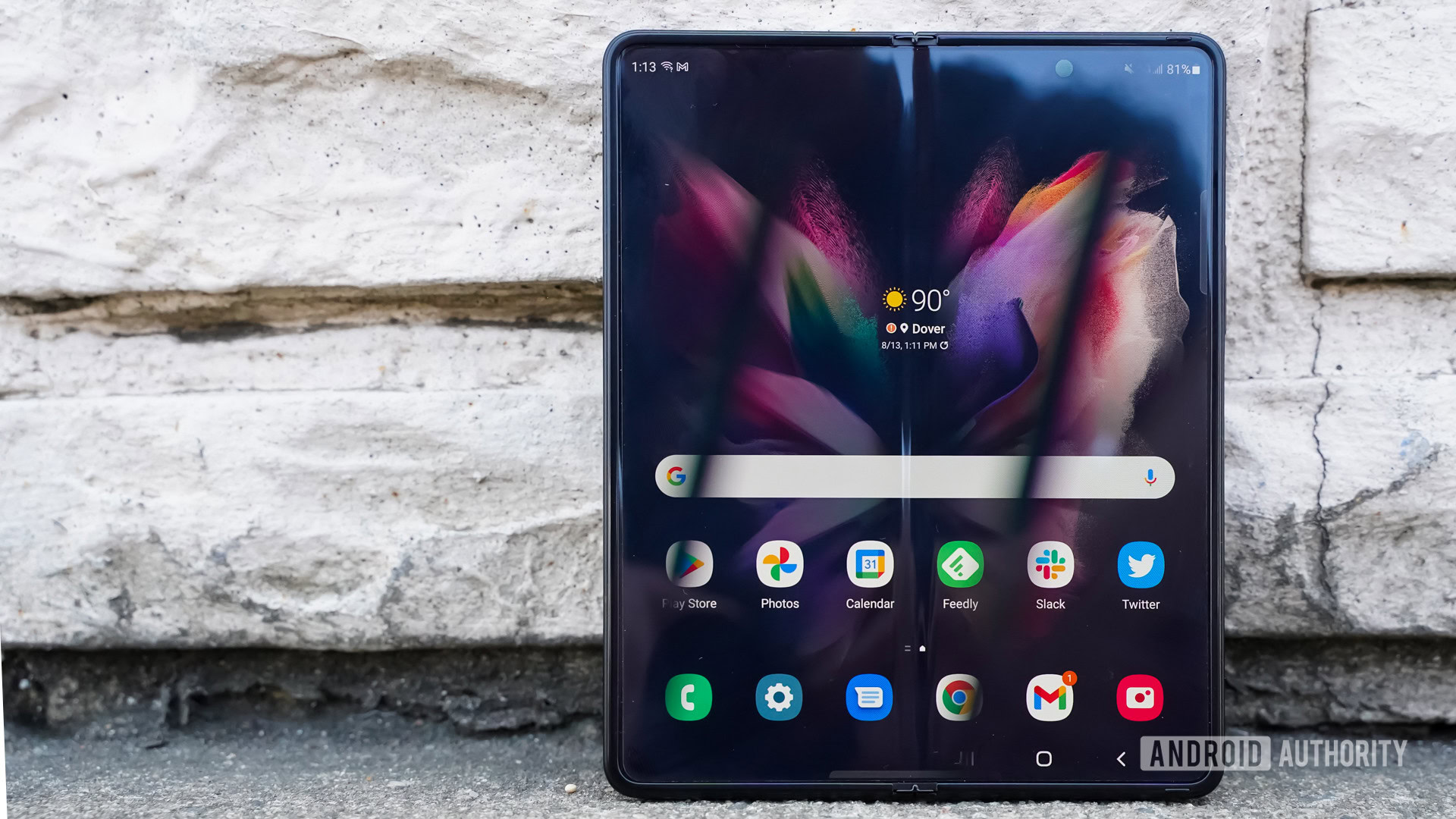
Then there’s the inner panel. The flexible screen is some of the most advanced tech available to consumers and Samsung managed to really step it up compared to the 2020 model. It has a new outer protective layer that Samsung claims is 80% stronger than that of the Z Fold 2. This improved screen protector (which you absolutely shouldn’t remove) is obvious as you interact with the phone; it comes across as less flimsy. Samsung did this to help ready the screen for S Pen stylus support. Samsung also minimized the gaps at the top and bottom of the display where it covers the hinge. The fit and finish of the panel as it moves within the chassis are second to none as far as folding phones go, though OPPO and HONOR have caught up quickly.
If there’s one simple design element that’s plainly updated, it’s the camera array. Where the Z Fold 2 had a large, rectangular camera module that was in step with the design of the Note 20 series, the Z Fold 3 smooths things over into a smaller, rounder three-lens strip that’s actually out-of-step with the Galaxy S21 series.
The controls and functional elements that are built into the edges around the frame are more or less identical to the Z Fold 2. The screen lock button, which doubles as a fingerprint reader, is positioned almost in the middle of the chassis on the right edge. As a button, some might say it’s too flush with the surface of the frame around it, which makes it harder to find in a hurry. The action is good, though. As a fingerprint reader, it’s quick and accurate once trained. It’s nice to have dedicated biometrics that work so well. The volume toggle is a little on the short side, but travel and feedback are good. The USB-C port is built into the bottom edge, where you’ll also note a speaker grille and microphone. A matching speaker grille and more microphones are drilled into the top edge of the phone.
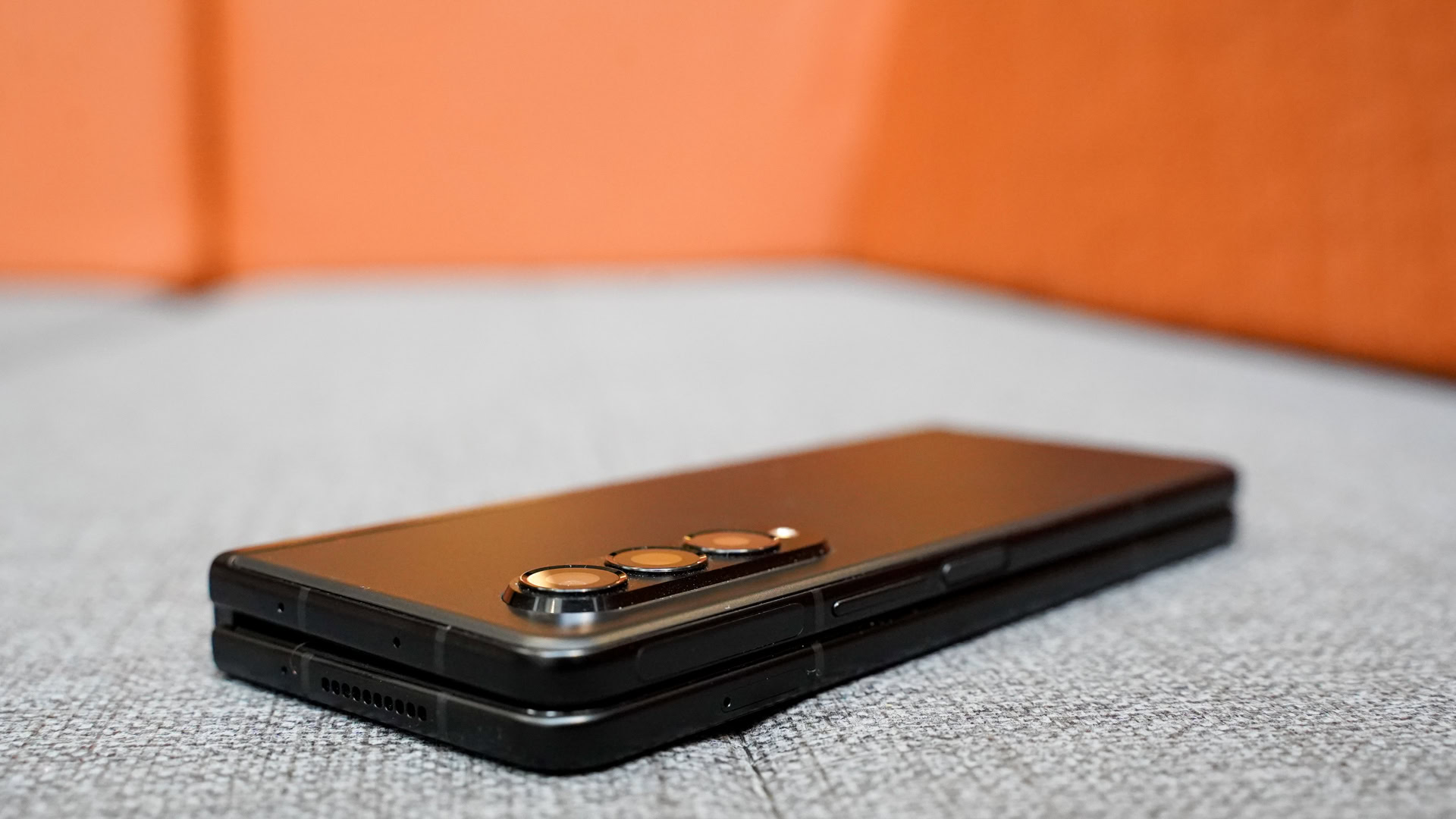
The stereo speakers provide Dolby Atmos sound. The clarity and balance were somewhat surprising. Highs, mids, and lows were all present in the mix, which was punchy without being overly bright. What’s more, you can crank the volume high enough to fill a standard room with plenty of sound without worrying about distortion. Bluetooth codec support is very good.
The SIM situation is a bit disappointing. The international version of the phone supports two SIM cards in addition to an eSIM. The US model, however, supports only a single physical SIM card and the electronic SIM is disabled. This is surely a move meant to appease US carriers. It’s anti-consumer and a bummer to boot. The phone doesn’t support expandable memory cards.
The Galaxy Z Fold 3's most significant improvement is an IPX8 rating for protection against water.
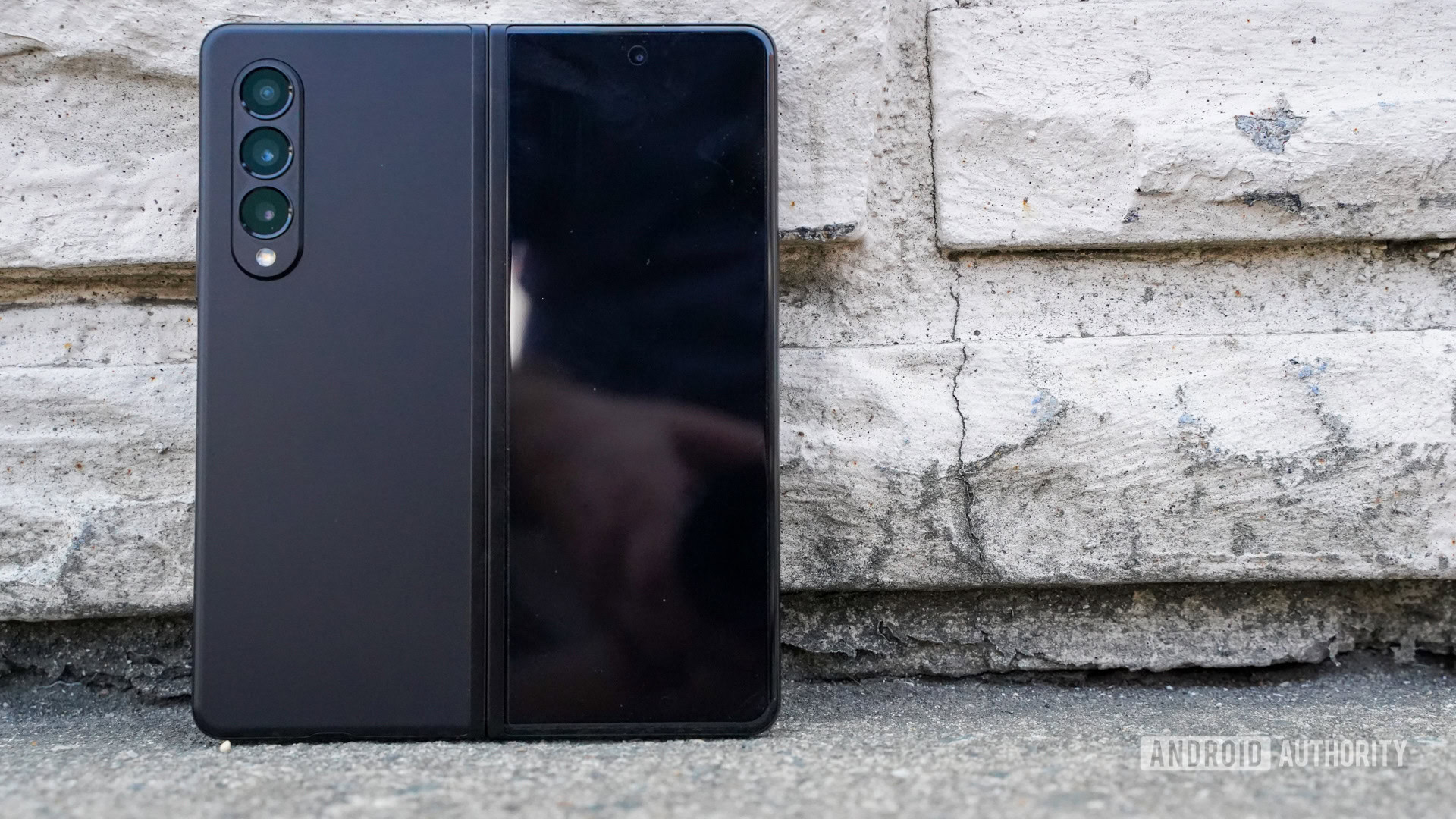
The Z Fold 3’s last, and perhaps most significant, improvement is an IPX8 rating for protection against water. This is a huge step up even if it has limitations. Samsung said it sealed off the two separate halves of the phone in the normal fashion with tape and glue. It then used a special process that includes some sort of goo to protect the cabling that runs between the two halves so water can’t get in. The hinge itself will expel water that gets inside. The Z Fold 3 is not, however, protected from dust. Remember, an IP rating is twofold: The first number represents protection from dust/dirt and the second number represents protection from liquids. The IPX8 rating means the Z Fold 3 can sit in up to 1.5m of fresh water for up to 30 minutes without a problem. Samsung doesn’t recommend you take the phone to the beach, where sand could cause problems. We tested the Z Fold 3 in a shallow pan of water and let it sit for a few minutes. It worked fine afterward.
For those who want the full Z Fold 3 experience, you’ll want to pair it with Samsung’s signature stylus, the S Pen. The S Pen is an optional (and expensive) accessory that doesn’t come with the Z Fold 3. Your old S Pen stylus will not work with the Z Fold 3. Critically, Samsung says older S Pens might damage the screen of the Z Fold 3, so keep them away. The new S Pens have a special retracting point that is meant to protect the Z Fold 3’s delicate screen materials from damage. Bottom line: Yes, you’ll have to fork over $50 to $100 to get a new S Pen if you want one for the Z Fold 3.
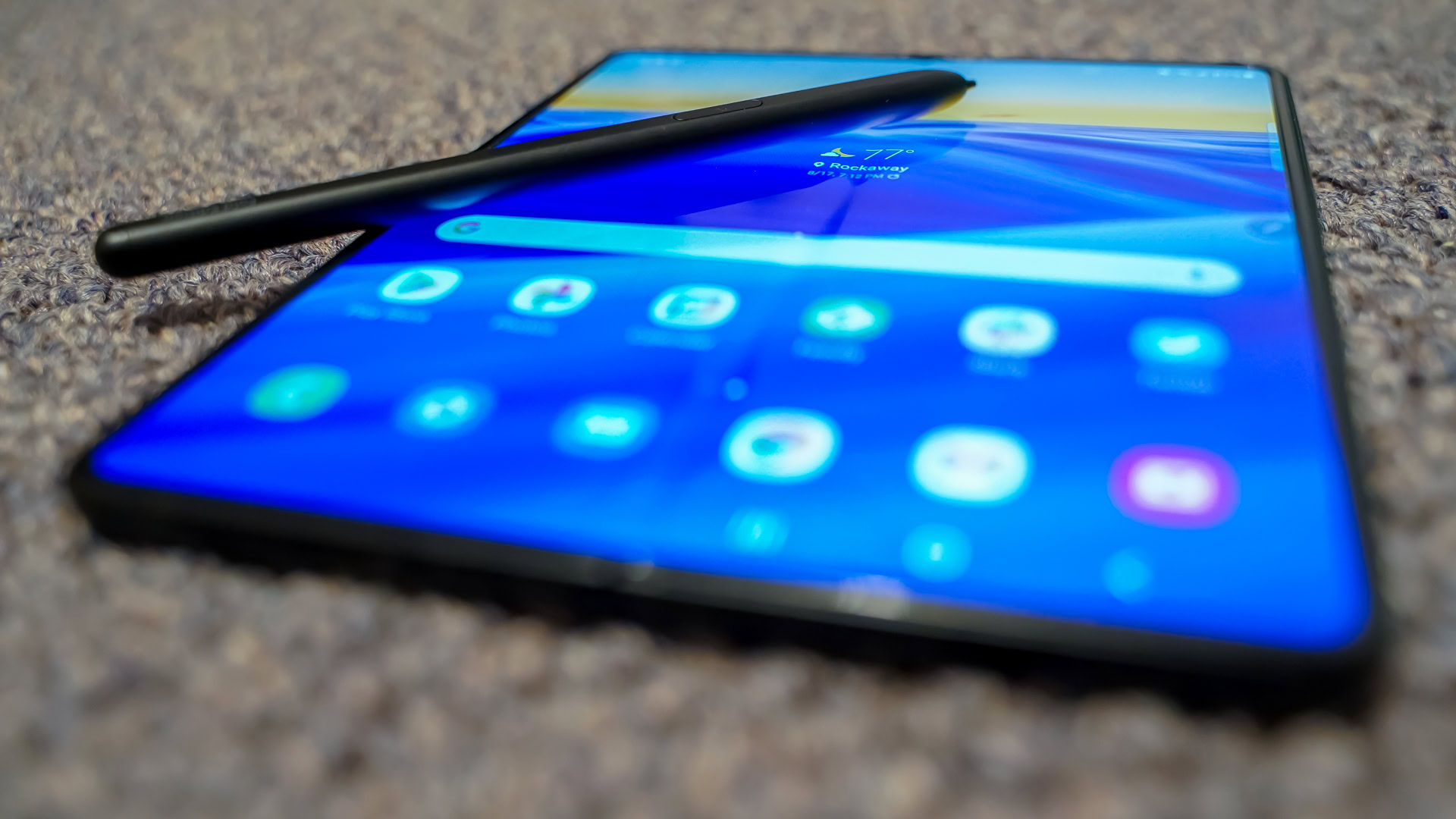
The smaller of the two S Pens, which we sampled, is a good size and feels comfortable in the hand. Using the stylus comes across as natural on the screen, though you can feel the center crease as you drag the stylus back and forth. It’s as responsive as you expect a good stylus to be.
If there’s one major complaint to levy against the Galaxy Z Fold 3’s hardware, it’s that the phone doesn’t have a storage space to garage the S Pen. The Galaxy Note always featured an internal slot for the S Pen. Granted, the space needed for the S Pen comes at a premium in a device such as the Z Fold 3, where every square millimeter is needed for vital components, but still. Part of the appeal of the Galaxy Note is that the S Pen was always there. With the Galaxy Z Fold 3, you’ll have to either carry the S Pen around separately or buy a case that includes a slot for the S Pen. Samsung sells the latter online ($80).
Check out: The best Samsung Galaxy Z Fold 3 cases you can get
In all, Samsung gave the Galaxy Z Fold 3 meaningful design updates that may not be entirely obvious to the naked eye yet still add up to a wholly improved phone and experience.
Display: Two for the price of two
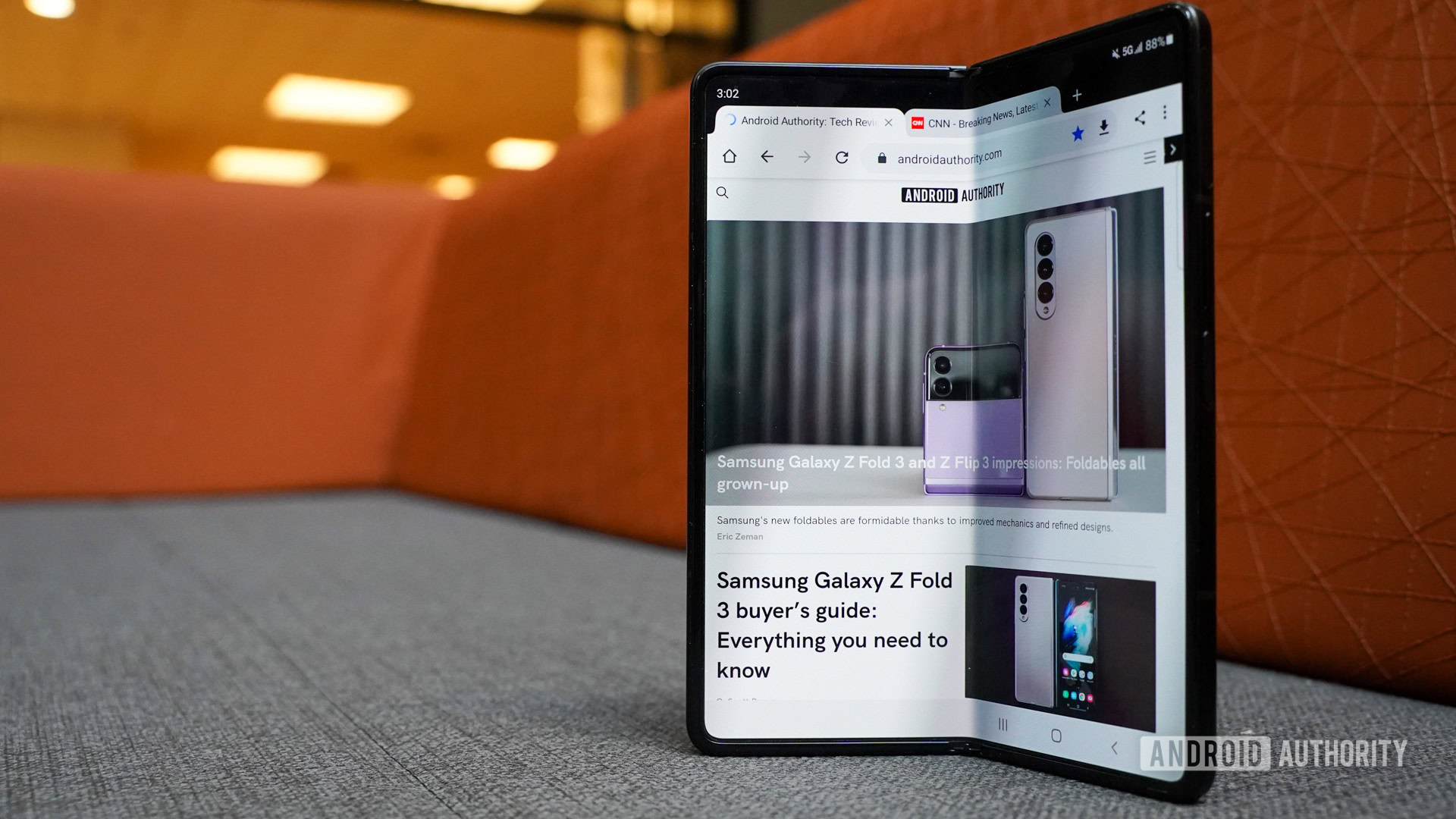
Outer
- 6.2-inch Dynamic AMOLED
- 2,268 x 832 resolution
- 387ppi
- 25:9 aspect ratio, 120Hz refresh rate
Inner
- 7.6-inch Dynamic AMOLED Infinity X Display
- 2,208 x 1,768 resolution
- 374ppi
- 22.5:18 aspect ratio, 120Hz refresh rate
The Z Fold 3 largely carries over the screens from the 2020 model with a couple of small changes to each panel. Let’s talk about each separately.
Outer
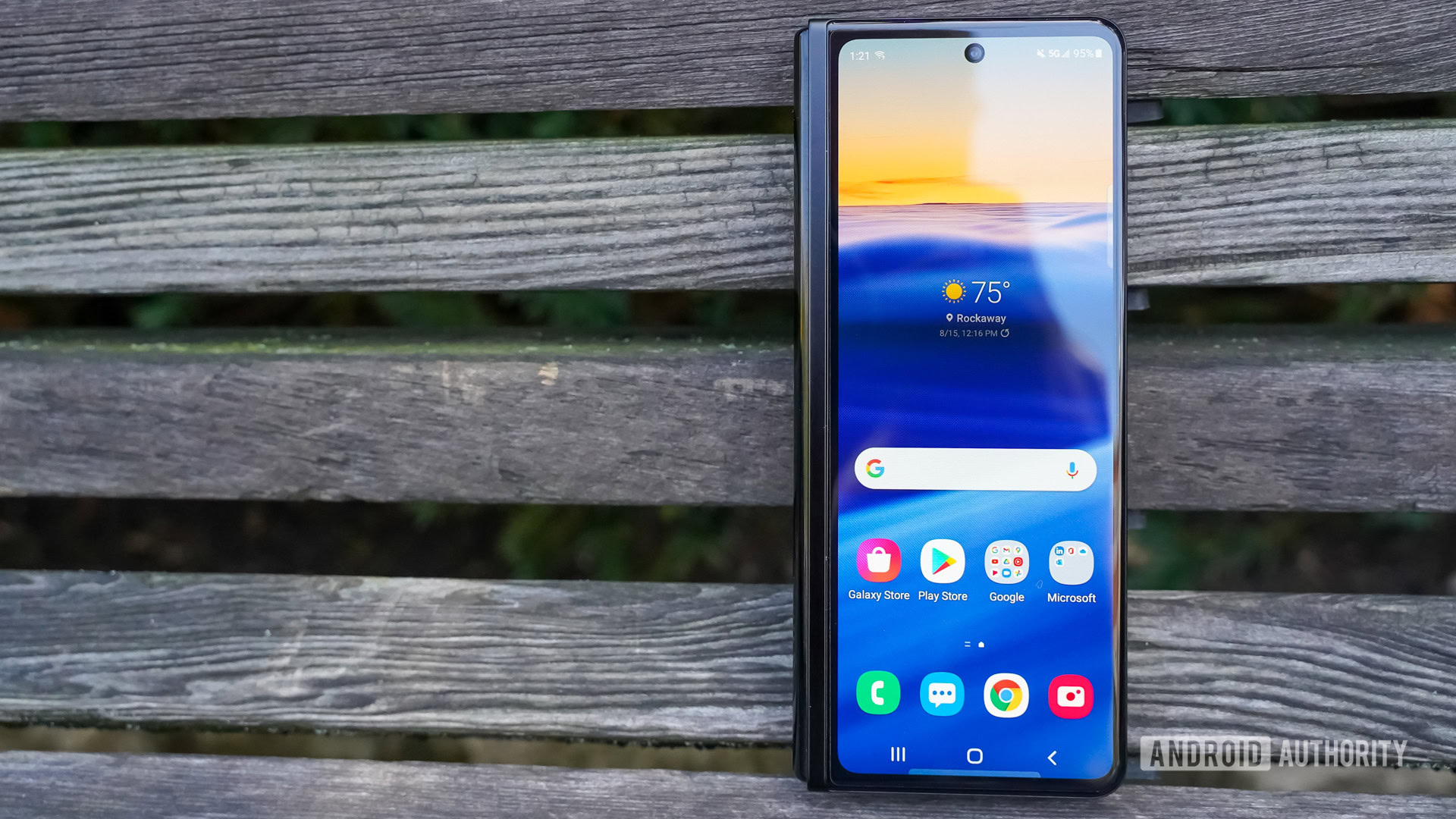
The smaller external display shares its dimensions and shape with the Z Fold 2, but it tosses in a few more pixels and boosts the refresh rate from 60Hz to 120Hz. The change isn’t overly dramatic but is appreciated nonetheless.
The Z Fold 3’s outer screen is an AMOLED affair in typically saturated Samsung style that offers just enough real estate for most smartphone tasks. It’s bright, colorful, and easy to use outdoors under the sun. Critically, you can rely on the outer screen to act as a camera viewfinder even under the brightest conditions.
The boosted 120Hz refresh rate does make a difference. Thanks to the outer screen’s narrow shape, it’s a natural place to take care of your inbox or scroll through Twitter or other social feeds. The 120Hz rating, which dynamically adjusts depending on the task at hand, improves the smoothness of scrolling in a big way.
Samsung made just the right touches to boost the experience of using the outer screen, but it’s still not quite wide enough for comfortable typing.
Inner

The inner 7.6-inch dynamic AMOLED screen is why you buy the Galaxy Z Fold 3. It’s a fine panel that offers plenty of space for multitasking and media consumption.
Samsung kept the same resolution as the Galaxy Z Fold 2, which means a better-than-full-HD experience that’s excellent but not mindboggling. There are plenty of pixels here, but the 374ppi is below the 525ppi number we’ve seen on the screens of some standard flagships.
Contrast, color, and brightness are all top-notch, especially considering that this screen bends in half. Full HD content from Netflix and other video purveyors looked excellent, though the odd aspect ratio of the panel means you have thicker black bars above and below your content. The screen also boasts a variable 120Hz refresh rate. You can spend hours scrolling through social feeds and relish the lush experience of pushing the screen up and down.
The uninterrupted look of the huge Z Fold 3 screen is something you can't get from many other phones.
Due to the nature of the protective cover and the materials used, you’ll notice a crazy amount of glare on this screen as you move around light sources. It’s particularly a problem outdoors, where the brightness can’t always balance out the glare from the sun. It’s not egregious, but it is definitely noticeable.
Where the Z Fold 2’s display featured a punch hole camera, the Z Fold 3 adopts an under-display camera (UDC) design, which means pixels from the display mostly obscure the inner selfie camera lens. You can absolutely still see the camera with the naked eye, but the pixels do help contribute to a more seamless screen experience. If you don’t mind punch hole cameras, this may not be an update you were was angling for, particularly since it impacts imaging quality for the inner selfie camera (more on that later.) That said, surely there are some people longing to buy a phone that features a UDC design. The uninterrupted look of the huge Z Fold 3 screen is something you can’t get from many other phones.
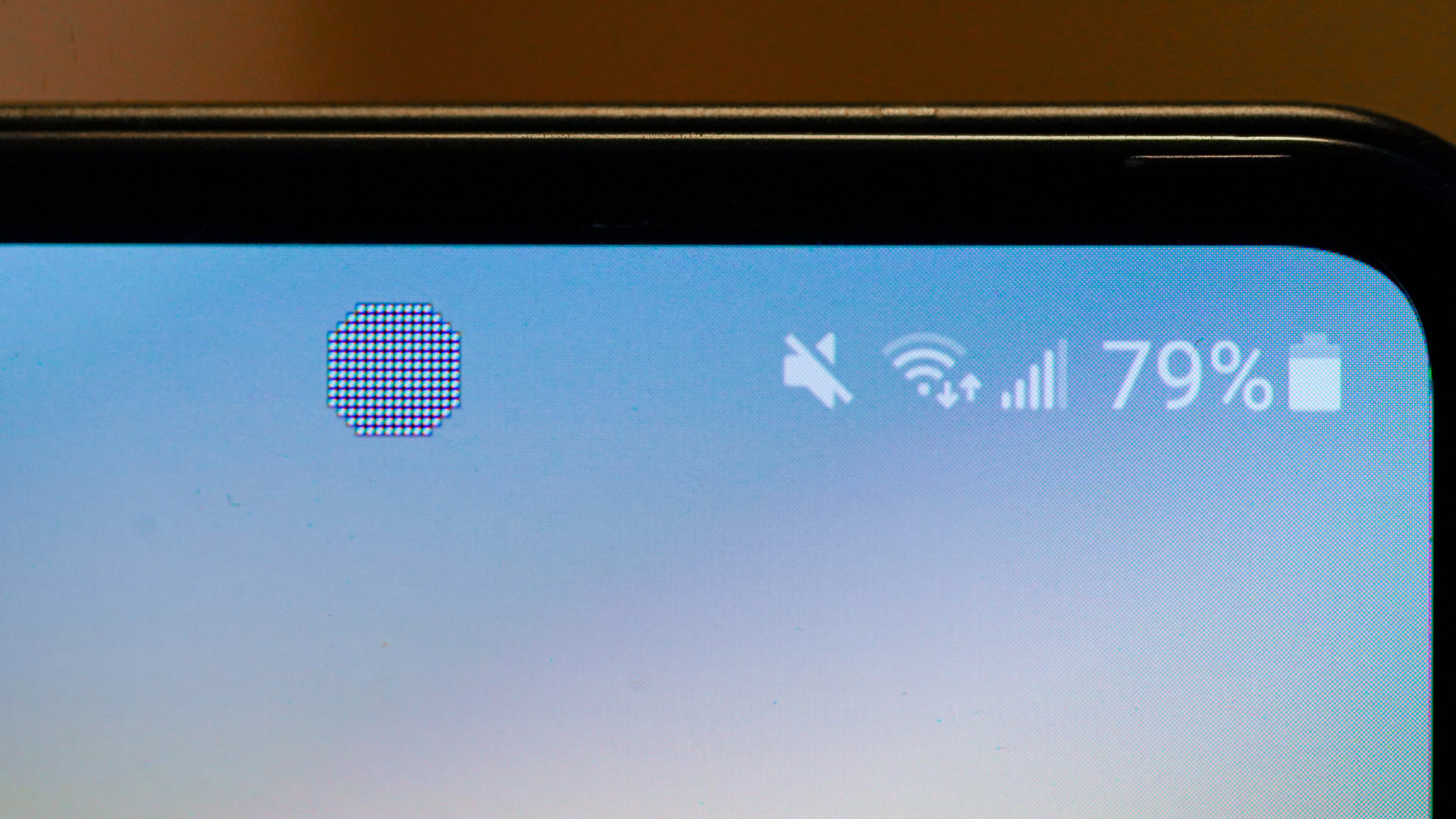
The last thing to say is that the crease in the middle of the screen is still there. It’s not as obvious to the eye or the finger as it was on previous Fold devices, but you can’t miss it, either. It does disappear from time to time depending on what you’ve got on the display, but by and large you’ll always know it’s there. And remember, the screen protector is vital and should not be removed!
More reading: Refresh rate explained — What does 60Hz, 90Hz, 120Hz mean?
The final word here is that the screen is more about the large size and shape, which gives the phone its multitasking powers, than it is about the raw pixel density. To that end, it delivers in a big way.
Performance: Top tier
- Qualcomm Snapdragon 888 processor
- Adreno 660 GPU
- 12GB
- 256GB/512GB storage
The Galaxy Z Fold 3 has one of the best chips from Qualcomm in addition to a reasonable allotment of RAM and fast UFS 3.1 storage. It runs in the top circle of mobile devices out there, though some of our benchmark test results fell behind other top Snapdragon 888 phones from OPPO, Xiaomi, and others.
Now that we’re so far from the Z Fold 3’s initial release, an entire wave of new flagships have arrived with the most recent flagship processor from Qualcomm, the Snapdragon 8 Gen 1. This chip delivers a modest boost in CPU performance and a bigger boost in GPU performance. We expect to see it in the 2022 Z Fold device from Samsung, whenever the company gets around to announcing it. Rest assured, you’re not missing anything by going with a phone running the 888 as it’s still a capable performer.
Daily performance of the Z Fold 3 is absolutely fine. The regular experience of using the phone for normal smartphone stuff demonstrates no issues with respect to speed or performance. The huge package of RAM allows the phone to run multiple apps at a time with no problem, no hesitation, no issue. Dragging content from window to window was always smooth and clean and there was no stuttering or hanging. Demanding games ran perfectly.
The day-to-day experience of using the phone proved to be excellent.
The phone did well on most benchmarks, though a few scores were a little short of the competition. For example, the phone beat only 88% of other phones in the 3DMark database. Many other Snapdragon 888 devices posted better scores. The phone’s Geekbench scores, which measure raw computing power, did compare favorably to other Snapdragon 888 phones such as the OnePlus 9 Pro.
In our homegrown Speed Test G performance test, which measures computing and graphics capabilities together, the Z Fold 3 put up a time of one minute and 21 seconds. That’s in the right ballpark for a flagship and close to Samsung’s own Galaxy S21 Ultra.
See also: Here are the best Snapdragon 888 phones you can buy
Don’t worry about the slightly less-than-perfect benchmark scores, though, as the day-to-day experience of using the phone proved to be excellent — and that’s what counts.
The phone packs 5G, as well, and supports both sub-6GHz and mmWave for use in markets where mmWave exists. Samsung lent us the phone with a T-Mobile SIM inside and the Z Fold 3 handily connected to T-Mobile’s 5G spectrum in the greater New York City area. In our experience with the phone, wireless performance was quite good. The phone is compatible with AT&T and Verizon’s 5G networks, too. It’s also future-proofed with Wi-Fi 6E and Bluetooth 5.2 support.
Battery: A little short
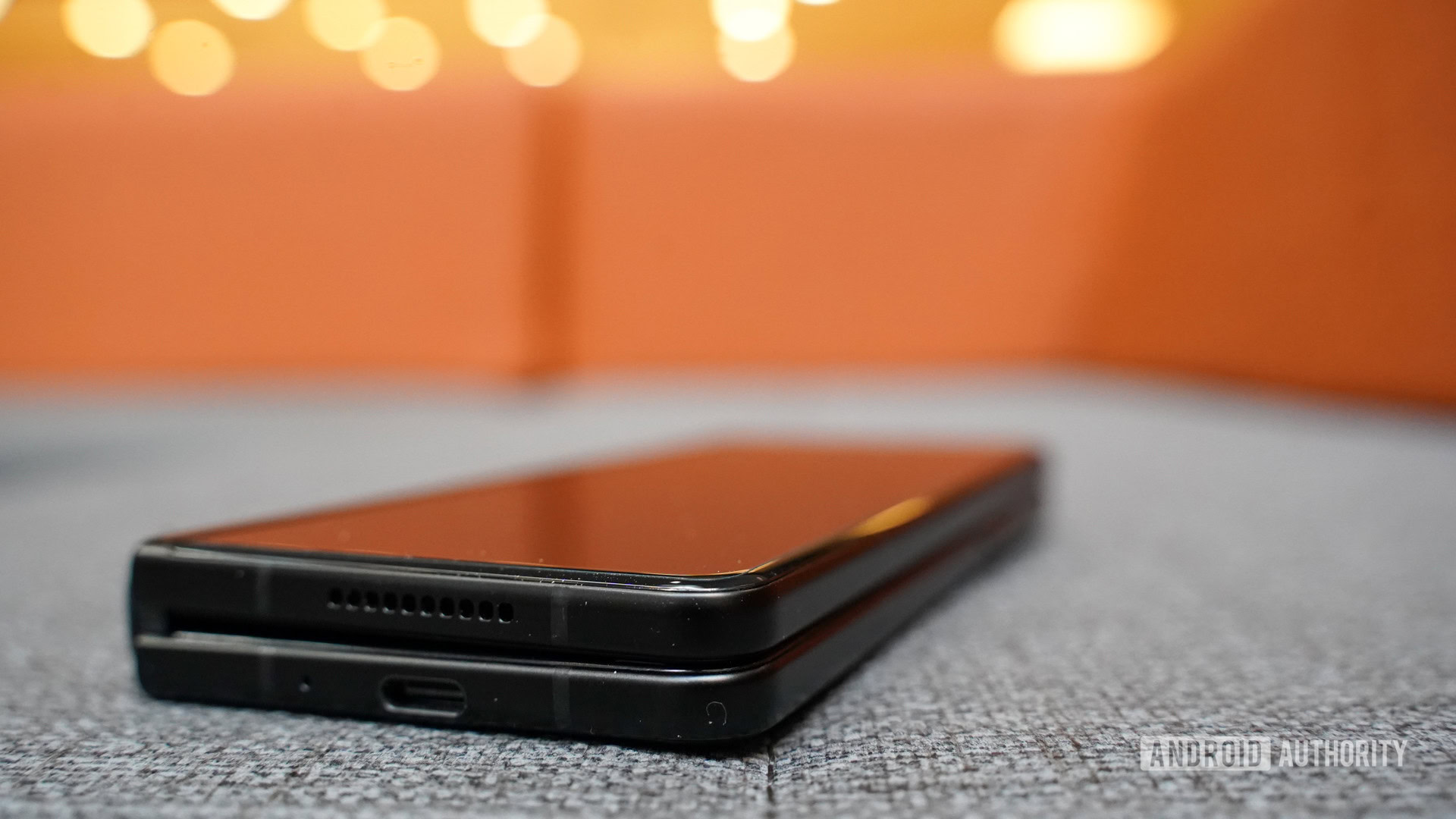
- 4,400mAh battery
- 25W USB PD PPS wired charging
- 10W wireless charging
- 4.5W reverse charging
Samsung actually reduced the size of the Z Fold 3’s battery when compared to the Z Fold 2, which is surprising considering the premium consumers put on battery life. It’s only smaller by 100mAh, but sometimes that’s enough to matter at the end of a long day.
Related: The best phone charging accessories
In our time with the phone, it lasted a day with mixed use of both screens, though it was pushing the 20% mark come bedtime. On days that we relied more on the outer display, it fared slightly better, and on days that we relied more on the inner display, it fared slightly worse. Total screen-on time when using mostly the inner display measured only five hours, which is not great. We like to see a minimum of six hours, if not longer. Granted, the Z Fold 3 has a larger display than most phones in the market, but five hours is a little disappointing. We used the phone on a business trip and the Z Fold 3 definitely came up short when compared to other flagships.
There are plenty of tools on board to tweak the way the phone consumes power. First and foremost, we did all our testing with the screen set to the 120Hz adaptive mode, which is how it is configured out of the box. You can reduce both screens’ refresh rates to the standard 60Hz, which could help conserve some battery life. You can adjust the brightness, futz with background apps, and take more steps to fine-tune the Z Fold 3 for your power needs. Personally, you might want to keep a charger handy.
I was hoping for slightly better battery performance.
Samsung kept charging speeds in check. Wired charging maxes out at 25W, which is well below the 30W to 65W speeds available from some competitors. The 4,400mAh battery took about 90 minutes to charge with a 25W USB PD PPS charger. Remember, the Galaxy Z Fold 3 doesn’t include a charger in the box, so you’ll have to supply your own power brick. And if you want the very top speeds, you’ll need one that’s USB PD PPS compatible, like several of those sold by Samsung.
Wireless charging is limited to 10W, which is slower than the 18W or higher available to some devices in the market. Our 18W wireless charger needed about one hour 50 minutes to replenish the battery fully. That’s not terrible, though it’s not overly swift either. The Z Fold 3 also supports wireless power share. The rate is really slow at 4.5W. This means powering up your accessories or another phone might take a while.
Check out: Everything you need to know about wireless charging
We didn’t expect the Z Fold 3 to set any battery benchmarks, but were hoping for slightly better numbers than it delivered.
Camera: Could be better
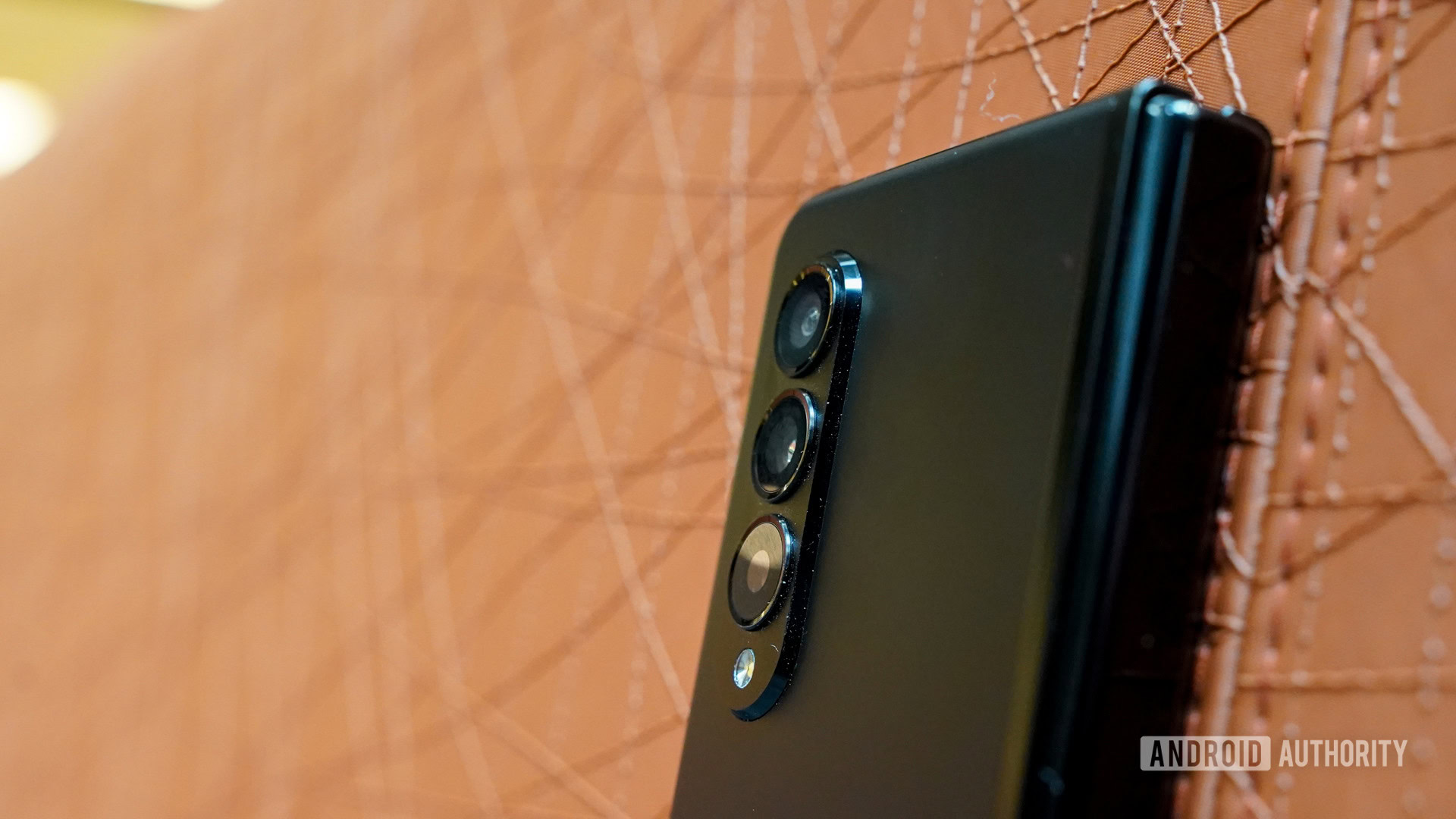
- 12MP, OIS, Dual Pixel PDAF, (f/1.8, 1.8μm)
- 12MP ultrawide, 123-degree field of view, (f/2.2, 1.12μm)
- 12MP telephoto, OIS, 2x optical zoom, Dual Pixel PDAF, (f/2.4, 1.0μm)
- Under-display camera: 4MP, (f/1.8, 2.0μm)
- Cover camera: 10MP, (f/2.2, 1.22μm)
- 4K video at up to 60fps
The Samsung Galaxy Z Fold 3 has five cameras. It packs a standard arrangement on the rear with main, ultrawide, and telephoto lenses, in addition to a user-facing camera on the front of the phone as well as the under-display camera that’s built into the screen. These give you plenty of options for capturing photos.
Samsung appears to have carried over the cameras from 2020’s phone, meaning you’ve got three 12MP sensors running in a vertical strip on the rear of the device. The selfie camera rates 10MP and the UDC rates 4MP. If you’re disappointed by the camera specs, it’s important to point out that the Fold series hasn’t traditionally served as Samsung’s top imaging device.
There are lots of ways to take pictures. The easiest is to keep the phone closed and rely on the outer display as your viewfinder. You have full access to all the phone’s photography tools when the phone is closed. The added benefit here is that the Z Fold 3 is more manageable in the hand this way as opposed to shooting snaps when opened up. However, if you want to use the full screen as the viewfinder go right ahead.
See also: The best camera phones you can get
Samsung’s camera software is powerful. There is a multitude of shooting modes available, with photo, video, portrait, and Samsung’s Single Take prioritized in the mode picker. The app provides easy access to the flash, settings, aspect ratio, and other simple tools, and of course using the shutter button is a walk in the park.
Photos captured with the main camera are very good, but short of excellent. Shots taken outdoors on a sunny day looked predictably good. With plenty of light, the sensor does well and captures good color and exposure with sharp focus. Some images were a touch noisy but nothing too terrible. You can see how the camera handled greens, blues, reds, and yellows in the color samples below.
Things weren’t as good once the sun went down. In the post-sunset shots below, you can see the loss of detail in the dark regions of the photos. Though the HDR tool was in effect, there’s a lack of range in some of these shots. The colors turned out a bit muted in the twilight photos and the amount of noise is ramped up. The shots are still usable, but they could be better.
Shots taken at night were fine. The street scene below is fairly accurate when compared to what our eyes saw, though there’s a lot more noise in the photo. In the samples below, the first two shots were taken with the camera in standard mode while the last shot was taken in night mode. It was able to capture this scene despite the near-total darkness in which it was taken.
The three lenses mean you have a solid zoom range for a smartphone. The ultrawide broadens things out to 0.5x, with the main lens giving you 1x, and the telephoto providing 2x optical magnification. You can zoom as much as 10x, though everything above 2x is accomplished via digital crop. The ultrawide does a solid job, though I noticed some odd distortion and noise near the corners of a few images. At least colors and exposure looked good. The zoom camera does a respectable job as well, particularly at 2x. Zooming beyond about 4x leads to noisy results and zooming all the way out to 10x generates even noisier photos that are hardly worth taking. Moreover, zoomed shots lose a lot of dynamic range, which leaves a lot of underexposed pockets in your photos.
Portaits work out okay. You can see in this series a regular photo, a group portrait, and a single portrait. The camera does well enough with edge detection and the amount of background blur is rather skimpy in the group portrait but is on target for the close-up portrait.
There are two ways to take selfies with the Z Fold 3. The easiest is to keep the phone closed and use the front-facing outer camera. This ensures that you can easily hold the phone, compose your shot, and capture a solid-looking selfie. This outer camera is decent but could be better. While the subject (you) is often in good focus, the outer camera struggles a bit with balancing the exposure of the background. Moreover, selfie shots with this camera tended to be noisy and rather flat in terms of color.
You can also use the UDC that’s built into the main screen. This gives you the full display to use to compose your shot and really lets you see what’s in the background as you move the camera around. However, the UDC produces images that aren’t great. Shots are noisy, soft, and demonstrate odd color and white balance. Most importantly, your face doesn’t look that good. Samsung suggests using the UDC for video calls only and it’s clear why: It doesn’t take very good pictures.
Check out: Samsung Galaxy Z Fold 3 vs Z Flip 3 camera shootout
Video capture is limited to a max of 4K at 60fps with a range of different frame rates available, so you can take slow-motion and time-lapse video if you wish. The Z Fold 3 does not capture 8K video. Samsung is betting that Z Fold 3 buyers don’t care as much about top-tier video as buyers of the Galaxy S series. The 4K footage we shot was sharp, colorful, and properly exposed. Most people should be happy with what the Z Fold 3 produces, but video addicts will find better options elsewhere.
In the end, the Z Fold 3 outperforms the Z Fold 2 in the imaging department by a respectable margin. The photos are generally cleaner and sharper with better color. However, the Z Fold 3 does not compare favorably to the Galaxy S22 Ultra, which has higher-resolution sensors and far superior zoom capabilities. Other flagships, such as the Apple iPhone 13 Pro Max and Google Pixel 6 are better at basic photography.
You can check out the full-resolution camera samples in this Google Drive folder.
Software: Subtle S Pen power
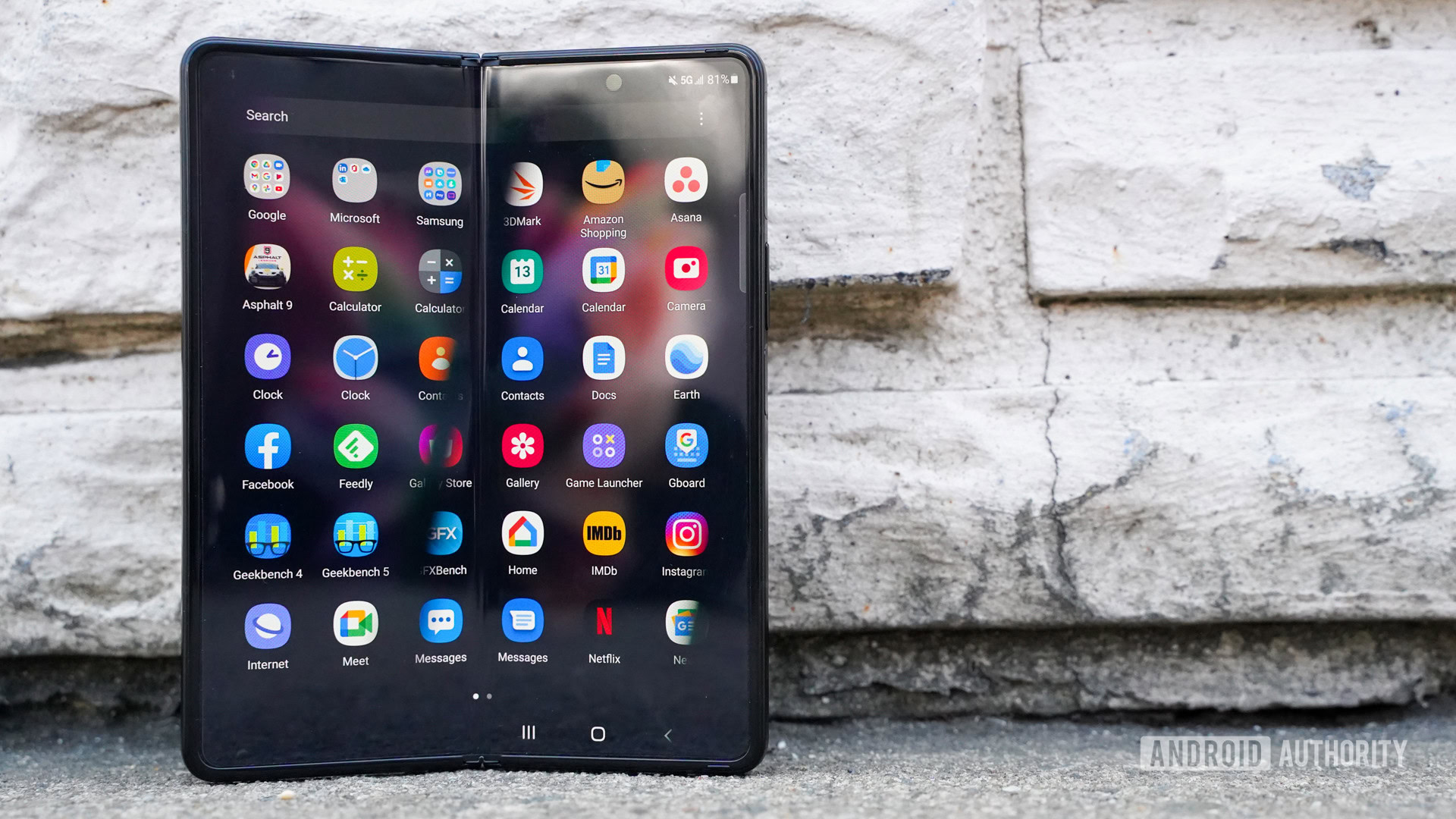
- Android 12
- One UI 3
- Four years of promised software updates
The Galaxy Z Fold 3 shipped with Android 11 and Samsung’s One UI 3.1. Samsung has improved its commitment to four years of software updates and five years of security updates for the Z Fold 3, which means it should receive Android 12, 13, 14, and 15 over time. Indeed, making good on its word, Samsung has already updated the Z Fold 3 to Android 12 and One UI 4. Since the Z Fold 3’s launch, Google has also introduced Android 12L, a version tailor-made for larger-screened Android devices. Samsung hasn’t said how Android 12L will play a role in the Z Fold’s future, although rumors have it that the software will be available on the upcoming Galaxy Z Fold 4.
There are a fair number of apps preinstalled on the phone, with most coming from Google, Samsung, and Microsoft. There was no real bloatware on our review unit, but you can expect carrier-branded devices to have carrier-branded apps on board.
The Galaxy Z Fold 3’s software is unique among smartphones. The fact that it has two screens required Samsung to take steps to ensure a seamless experience as users transition between the two displays. Thus, we have app continuity, which allows apps open on the outer screen to properly reconfigure themselves when switching to the inner screen. If you want apps to transition from the inner display to the outer display upon closing, however, you’ll have to enable this feature on an app-by-app basis in the settings menu. This can be helpful for apps such as the calendar or messaging. If you don’t enable it, closing the larger screen turns off both displays.
Samsung says about half of the global top 100 apps have specifically adapted to the Z Fold 3’s main screen, allowing for special features such as dedicated control panels. The rest will default to the tablet view, the effectiveness of which varies by application. You can force apps that don’t behave to adapt the aspect ratio of the Z Fold 3 via settings if it bugs you one way or the other.
One of the special features of the Z Fold 3 is Flex Mode, which is enabled when you’ve set the device up as a tiny makeshift laptop. In this orientation, the app you’re using will appear on the top of the screen and a panel will appear at the bottom of the screen with extra controls to help you use the app. Some apps — such as those from Samsung, including the camera — support this natively, but you can force it on for other apps through the Labs tool in the settings. Flex Mode can be helpful at times when you’re looking for a simpler way to manage an app’s controls while the device is semi-folded.
It’s impressive how customizable these advanced features are, but it could be easier to activate some of them. There’s a bit of a learning curve, though once mastered they make the Z Fold 3 all the more powerful.
Then there’s multitasking, which is the Z Fold 3’s specialty. Managing multiple apps at a time on the main screen is as simple as dragging them over from the Edge Panel and dropping them where you want them. The screen supports up to three apps at a time, allowing you to manage your inbox, watch YouTube, and surf the web all at once. You can mix and match which apps appear in the panels, and dragging content from one to the other is a piece of cake. It’s the phone’s superpower.
Multitasking is the Galazy Z Fold 3's superpower.
What does the S Pen do? Bringing the S Pen near the Z Fold 3 will automatically launch the floating Air Command tool, which you can reposition to anywhere on the screen. There’s no pairing necessary. Air Command gives you quick access to the S Pen’s features, which are carried over from the Note series of the past and haven’t changed much in the last few years. Create Note is what you expect and is the core power of the S Pen. This note-taking app is robust and gives you plenty of ways to jot down notes, convert your scribbles to actual text, share your musings, and so on. If you’re an S Pen power user, the Z Fold 3 offers all you could want when it comes to stylus-enabled functionality. The major missing component here is, of course, a way to carry the S Pen with you that doesn’t require an expensive case on top of your already expensive phone and stylus.
In all, you’ll find no shortage of advanced tools, settings, and features to futz with. The Samsung Galaxy Z Fold 3 offers some of the most practical and potent software of any smartphone. We just wish some of it were easier to use and discover.
Samsung Galaxy Z Fold 3 specs
| Samsung Galaxy Z Fold 3 | |
|---|---|
Displays | Exterior: - 6.2-inch AMOLED - 120Hz refresh rate - 2,268 x 832 resolution at 387ppi - Gorilla Glass Victus Interior: - 7.6-inch AMOLED - 120Hz refresh rate - 2,208 x 1,768 resolution at 374ppi - Foldable display covering |
Processor | Qualcomm Snapdragon 888 |
RAM | 12GB |
Storage | 256GB or 512GB UFS 3.1 No expandable storage |
Power | 4,400mAh dual-battery 25W wired charging 10W wireless charging 4.5W reverse charging No charger in box |
Cameras | Exterior rear: - 12MP wide, 1.8μm, OIS, Dual Pixel AF, ƒ/1.8 - 12MP ultra-wide, 1.12μm, ƒ/2.2 - 12MP telephoto, 1.0μm, OIS, 2x zoom, ƒ/2.4 Exterior front: - 10MP ƒ/2.2 Internal UDC: - 4MP, 2.0μm, ƒ/1.8 |
Audio | Stereo speakers Dolby Atmos support No 3.5mm headphone port |
SIM | Dual nano-SIM tray eSIM support |
Biometrics | Side-mounted capacitive fingerprint sensor |
Software | Android 11 One UI |
Dimensions and weight | Folded dimensions: - 158.2 x 67.1 x 16mm (measured at hinge) Unfolded dimensions: - 158.2 x 128.1 x 6.4mm Weight: - 271g |
Colors | Phantom Green, Phantom Black, Phantom Silver |
Value and competition


The Z Fold 3’s value equation depends wholly on how much you pay for it. The sticker price is $200 lower than its predecessors, but at $1,799, the Z Fold 3 is far from cheap or affordable. Toss in an S Pen and a case and you’re looking at $2,000 all over again. Can such a pricey phone deliver a return on investment? It will hinge on how you plan to use it. Power users who take advantage of the multitude of features stand more of a chance to get their money’s worth from this premium piece of hardware.
The Z Fold 3 starts to make more sense if you’re able to score a trade-in deal or other discount from Samsung. As mentioned earlier, Samsung is still allowing people to trade in up to two devices toward the Z Fold 3, potentially lopping hundreds of dollars off the total price. Moreover, Samsung offers two- and three-year financing options. There are some limitations, though. Samsung only accepts Apple, Google, LG, Motorola, OnePlus, and Samsung devices for trade, at least in the US.
Even at a reduced price, the Z Fold 3 is more expensive than nearly every other phone in the market.
Even at a reduced price, the Z Fold 3 is still more expensive than nearly every other phone on the market. If you can score a trade-in deal, it’s closer to being worth it.
Then there’s the competition. Wait. What competition?!? There are barely any other folding phones in this class. True, there’s the interesting HUAWEI Mate Xs 2, but it doesn’t have access to Google Play Services, nor is it widely available outside of China. That makes it a non-starter for most. The OPPO Find N and HONOR Magic V are in a similar situation — impressive, tablet-type foldables with no plans for launches outside of China.
Check out: The best phone deals
If you’re looking for the folding phone experience but you’re on a budget, the Galaxy Z Flip 3 ($999) is a good place to start as it has a much more palatable price point. The clamshell form factor of the Z Flip 3 doesn’t offer as many unique use cases, nor the multitasking and S Pen powers, but the 2021 model is a legit hot commodity that finally makes foldable phones affordable. Read more about it in our full review.
Of course, there’s an entire range of $1,000+ premium flagships that offer a more traditional experience — often with better battery and camera performance — that may simply be more practical for general buyers who don’t crave an innovative form factor.
The Samsung Galaxy S22 Ultra ($1,199) is the top contender thanks to its built-in S Pen and more impressive camera. There’s also the more affordable Galaxy S22 Plus ($999). Look further afield and you have the OnePlus 10 Pro ($899), Sony Xperia 1 IV ($1,599), and Google Pixel 6 Pro ($899) all of which are solid flagships in their own right that offer a more well-rounded experience than the Galaxy Z Fold 3 without the folding perks. For those that don’t mind switching sides, Apple’s iPhone 13 Pro Max ($1,099) is another great option for big phone fans that don’t necessarily need that folding screen.
Samsung Galaxy Z Fold 3 review: The verdict
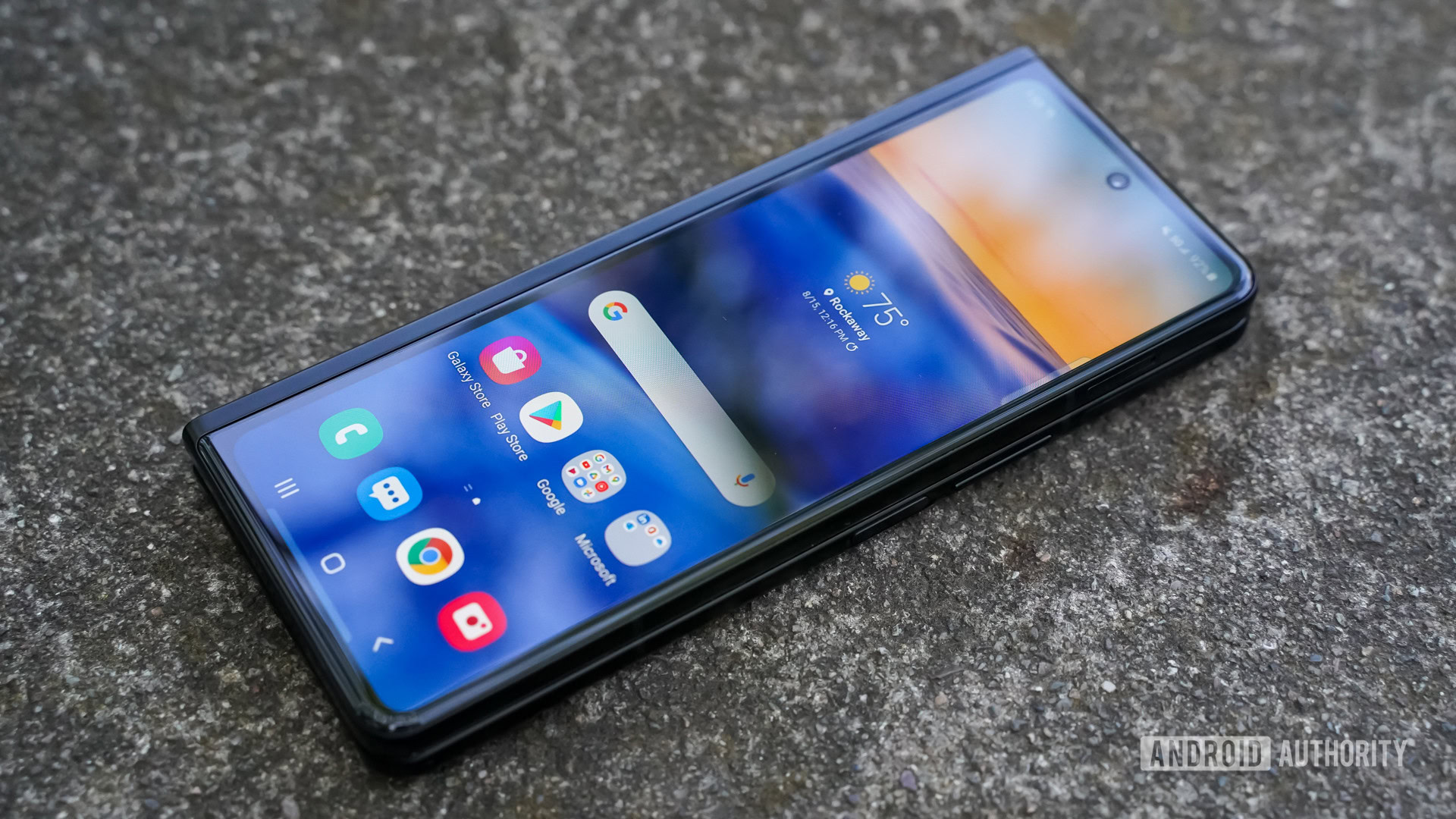
There’s no question the Samsung Galaxy Z Fold 3 is a better phone than either of its predecessors. Samsung did a commendable job updating the hardware in just the right ways to deliver a superior experience. Critically, Samsung overhauled the folding display tech to give it a more robust feel that’s not only stronger but supports the S Pen stylus for expanded functionality. Both displays boast improvements, as do all the general specs, and the chassis is now at least waterproof (though not dustproof).
Despite Samsung’s efforts, the company did stumble here and there with the phone. For starters, battery life is somewhat limited and may not get power users through a full day. Moreover, the camera is merely good and not great. Our guess is most people expect a $1,799 phone to include a great camera, not a good one. And while it’s great that Samsung added S Pen compatibility to the Z Fold 3, the lack of a built-in garage and added cost of the stylus make a dubious value.
The Samsung Galaxy Z Fold 3 is a stellar device that capitalizes well on the lack of competition. No other phone offers the polished foldable experience that's available from the Z Fold 3.
All that said, the Samsung Galaxy Z Fold 3 is a stellar device that capitalizes well on the lack of competition. No other phone in the market offers the polished foldable experience that’s available from the Z Fold 3. If you want a pocketable phone that converts into a tablet, the Z Fold 3 is the only one to get for now, if you live outside of China. You can get better battery life, better cameras, and lower prices from standard phones, but nowhere can you get everything in a single, high-end, tablet-sized package that impresses so much.
Read next: Samsung Galaxy Z Fold 3 six months later
However, keep in mind that the Samsung Galaxy Z Fold 4 will be announced soon — learn more here. If you don’t need a phone right away, waiting for its debut makes sense, especially if it ends up costing the same as the Galaxy Z Fold 3. Once it goes on sale, we also expect the price of the Z Fold 3 to drop.
Samsung Galaxy Z Fold 3 top questions and answers
Yes, the Samsung Galaxy Z Fold 3 is compatible with the company’s S Pen stylus, but you’ll have to buy it separately. The Z Fold 3 also doesn’t have an internal space to house the S Pen like the Galaxy S22 Ultra does, for example.
The company claims that the Samsung Galaxy Z Fold 3 is rated for up to 200,000 folds, which is equivalent to five years of use if you fold and unfold the device 100 times a day.
A screen protector should add an extra layer of safety to the display, although it’s not required. But keep in mind that you can’t use a tempered glass screen protector on the inner display, as glass doesn’t fold.
According to Samsung, you’ll have to pay $479 to replace the inner screen.
Yes, the Samsung Galaxy Z Fold 3 comes with a one-year warranty in the US.
Samsung Care Plus for the Galaxy Z Fold 3 will set you back $11 per month — you can cancel anytime. You can also save money by paying upfront for a two-year plan, which will cost you $239.
Yes, the Samsung Galaxy Z Flip 3 has an IPX8 rating that protects it against water, but not dust. The phone can sit in up to 1.5m of water for up to 30 minutes without getting damaged.
Yes, there is a crease in the middle of the Samsung Galaxy Fold 3’s display. It is quite visible, especially in a well-lit environment.
Unfortunately, you don’t get a charger included with your Samsung Galaxy Z Fold 3 purchase.